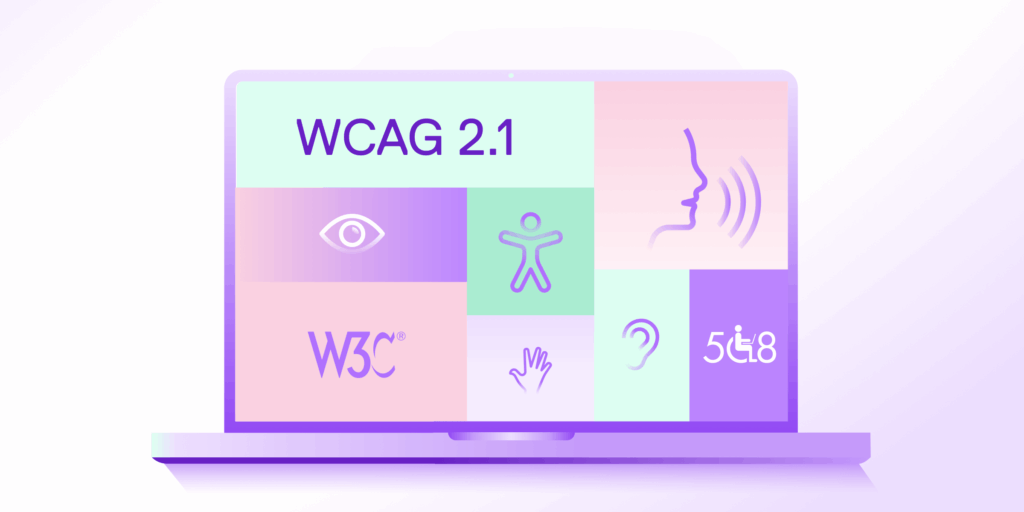Learning strategies are methods used by instructors to initiate students into effective learning by using a variety of engaging learning techniques, activities and practices. These methods are all derived from years of meticulous research into how people learn best.
In any lesson plan, instructors can incorporate multiple learning strategies. By catering to different learning styles and varying your approach, you can better engage students while helping them master new concepts.
Top Hat’s 2021 Online Teaching Toolkit gives you easy-to-use teaching templates, active learning strategies and more to engage your students in an online or hybrid learning environment. Get free access today.
Why are learning strategies important?
Learning strategies are an essential component of creating an effective learning experience. They can help learners develop proficiency in various subject matter areas and develop new skill sets. They also help learners develop confidence in their own knowledge, proficiency and learning abilities.
The following describes some common strategies for achieving various learning outcomes, along with practical examples you can incorporate directly into your learning environment.
Think-pair-share
This active learning exercise is designed to activate any prior knowledge a student may have on a subject by having them share their thoughts and beliefs with their fellow learners.
A think-pair-share exercise is structured to help students first organize their thoughts, then share these with a partner followed by the broader class.
- Think: Students take a moment to contemplate the new concept or idea on their own. They can also write down their thoughts to help develop their note-taking skills.
- Pair: Students break off into pairs to share their thoughts and beliefs on the topic with another learner.
- Share: Students then share their takeaways from this conversation with one or more successively larger groups, up to and including the whole class.
Putting think-pair-share into action
To execute think-pair-share in your class, define the exercise for the group and display the prompts you’d like to pose for discussion. Once students have completed the exercise, you can then facilitate a larger class discussion.
Make a point of listening to student responses before offering your own ideas. You can also pose probing questions while encouraging other students to offer their own responses and reactions to each other’s ideas.
Tests and quizzes
There are several ways instructors can use tests and quizzes as effective strategies for learning.
Individual plus group quizzes: Have learners complete independent quizzes for grading. Following this, place learners into small groups and give them the same quiz as a form of cooperative learning. This time, allow the groups to discuss their answers and come up with an answer for each question. Then, grade the group as a whole on their collective performance.
Not every student likes group assignments, since this may raise concerns about their individual grades. To avoid penalizing more diligent learners, take an average of each student’s two scores if the group score is higher than their individual score. If the student’s individual score is higher than the group score, let that individual score stand as the average. This process encourages students to be accountable for their own learning while helping develop their test-taking and collaboration skills.
Tests and quizzes with distractors: Distractors are common preconceptions or misconceptions about a topic. Have students answer various questions and, then, discuss their answers with a fellow student. After this discussion, have each student answer the same question again and see if their answers are any different. To close off the activity, initiate a group discussion about why the correct answer is actually the correct one. This acts as a form of metacognition by encouraging students to think about their own learning.
Retrieval practice
The process of bringing information to mind, or retrieval practice, is an effective strategy in boosting learning. In these exercises, students put away all learning materials and answer questions or discuss a topic purely based on their own recall of the information. Students can then refer to learning to evaluate how accurately they conveyed the information. Retrieval practice exercises also work well using the think-pair-share format.
Elaboration
In elaboration, students demonstrate the depth of their knowledge of a given topic by describing and explaining as much as they know about it, including as many relevant details as they can call to mind. This strategy extends the concept of rote memorization by encouraging students to draw connections within the content and between the content and other knowledge they already possess.
Interleaving
Interleaving is the process by which students mix multiple subjects or topics while they study. This allows students the opportunity to practice different modes of thinking and problem-solving as opposed to ‘blocked practice,’ which involves studying one topic thoroughly before moving on to the next.
Interleaving has been shown to improve test scores in a number of studies. As a best practice, it is important to use interleaving for related topics. For example, interleaving works well when switching between different algebra problems but is not nearly as effective when switching between radically different subject matter areas, such as literature and math equations.
Muddiest point
This form of assessment helps educators understand which elements of their course pose difficulties that may impede student progress and performance.
In this exercise, instructors ask students to note the “muddiest points” of the lesson, or the most confusing or difficult to grasp. Have students rate their degree of understanding and capture where the difficulty lies.
While the exercise shouldn’t take more than a few minutes, it has additional benefits beyond helping the instructor understand where the obstacles are for students. It also helps students more effectively analyze their own learning and to zero in on the exact issue that may be holding them back.
Peer instruction
Also known as ‘reciprocal teaching,’ this structured teaching practice asks students to reflect on new concepts they may be confused about and then share their responses to those prompts with a small group. Each group then derives a consensus response to share collectively with the rest of the class.
Peer instruction offers a number of benefits, including:
- Increasing a student’s problem-solving skills and conceptual understanding abilities
- Deepening student understanding of a topic and encouraging greater knowledge retention
- Bolstering student engagement and raising student course satisfaction
Not only does this exercise call upon students to explain their thinking, it asks them to defend it against alternative arguments and modes. This helps reveal for students as much about how they think and process information as it does about the information itself.
Differentiated instruction
Not all students learn the same way. Differentiated instruction recognizes and accommodates for this by tailoring the learning process to individual needs. This is accomplished by altering the content, process, product or the learning environment itself.
With differentiated instruction, instructors consider the different learning styles of their students before devising their teaching strategies. That way, they can incorporate multiple modalities to allow all students to succeed equally in learning the material.
Some other ways to implement differentiated learning include:
- Grouping students together for assignments by shared topics, interests, learning abilities or styles
- Using formative assessment tools to assess individual student learning styles and progress and then adjusting lesson plans accordingly
- Using classroom management tools to create safe and supportive learning environments for all students
Gamification
Sometimes turning a lesson into a game can better engage students in learning and comprehending the material.
Gamification essentially incorporates reward-based activities and teaching tools into the lesson plan. Examples of gamification include:
- Earning points for finishing tasks
- Competing against peers toward a goal
- Playing games that teach particular academic skills
Project-based learning
Through project-based learning, students work together on a project over an extended period, generally between one week and an entire semester. The project ideally involves solving a real-world problem or addressing a complex question. The finished product is a public presentation or product they can present to a live audience.
Problem-based learning
Problem-based learning involves incorporating real-world situations as a vehicle to help students apply course concepts in a practical application. This helps make learning more relevant by connecting concepts to the world outside the classroom and can add variety to the learning process itself.
Formative assessments
Formative assessments are designed to monitor learning and provide feedback on each student’s progress on an ongoing basis. The steady stream of feedback allows instructors to refine and improve their teaching strategies to keep the class on track. At the same time, students can practice their test-taking skills, improve information recall while honing in on their areas of strength and weakness.
Formative assessments are typically considered “low stakes.” The primary goal is not a letter grade but generating feedback for the instructor and the student. Examples of formative assessments include:
- Self-assessments
- Entry and exit slips
- Dipsticks
- Low-stakes polls and quizzes
- Exercises incorporating art or other visual representations of learning content
- Misconception and errors
- Interview assessments
Summative assessments
Instructors use summative assessments to evaluate how thoroughly students learned an area of study. Summative assessments usually come upon the completion of an instructional unit and compare student knowledge and achievement against a previously determined set of benchmarks.
Considered “high stakes,” summative assessments are commonly used to determine a student’s subsequent course work and educational progress. Examples of summative assessments include:
- Final projects
- Term papers
- Midterm, final or standardized exams
- Performance or recital
Educators may sometimes use summative assessments in a formative manner to guide student activities and efforts throughout their coursework.
Quick write
In this exercise, pose a prompt to the group to respond to in writing. Only allow five minutes for this exercise, so students can quickly reflect on their initial thoughts on a subject.
Uses and benefits of a quick write include helping to:
- Determine whether students completed their assigned homework
- Prime students to think about topics to be introduced or developed in the upcoming lesson
- Give students the chance to access previous knowledge they may have on a subject
- Instructors can opt to grade the quick write or simply collect it as a means of confirming attendance.
Polling
Pose a question to be answered or explained, and then take an anonymous poll to see how many students favor particular answers or explanations to the question.
Afterward, initiate a group discussion of the question and the poll’s results to see why students voted the way they did. Following the discussion, take the same poll again to gauge whether any students changed their answers and, if so, to what extent and why.
Hearing why students chose a particular explanation or answer helps the instructor understand how students think about that topic. It also helps them determine if additional explanation or clarification may be required before moving on in the lesson plan.
Turn and talk
In this exercise, instructors pose a question to the group, then instruct students to choose a partner to discuss their thoughts on the question with. This can create a comfortable atmosphere for sharing ideas before bringing ideas before the whole group.
Make sure the questions students are asked to discuss are clear and that the understanding of each participant is there in order to contribute to the conversation both as a speaker and listener.
Jigsaws
This exercise is performed in small groups in which students read a preselected passage of course material. Students in each group divide up the material so that each member reads a portion of it silently and then shares what they’ve learned with the rest of the group.
Some questions participants can use as points of focus include:
- What’s the big idea here?
- What do you believe it means, and why does it matter?
- How can someone apply this idea to help understand a larger topic?
- What part(s) of the reading do you agree and/or disagree with?
- What questions does the reading raise for you?
Instructors can implement jigsaws in a number of ways. In an ‘expert and cooperative group’ format, assign different groups different pieces of the material to read individually and discuss. Each group then becomes the expert group on that portion of the material. Following this, groups are redivided so that each new cooperative group contains one or two representatives from each of the previous expert groups. Each cooperative group then reviews the material with the expert representative. The jigsaw method is a great way to get students up to speed quickly on material while honing their critical thinking and communication skills.
Conclusion
Learning strategies help you better engage students in active learning by using a variety of activities such as reading, writing, discussion or problem-solving. Easy to execute, these activities promote analysis, synthesis, and the evaluation of class content. Equally important, they provide students with opportunities for feedback on how well they understand course material, ensuring they are making meaningful progress toward achieving course objectives.


